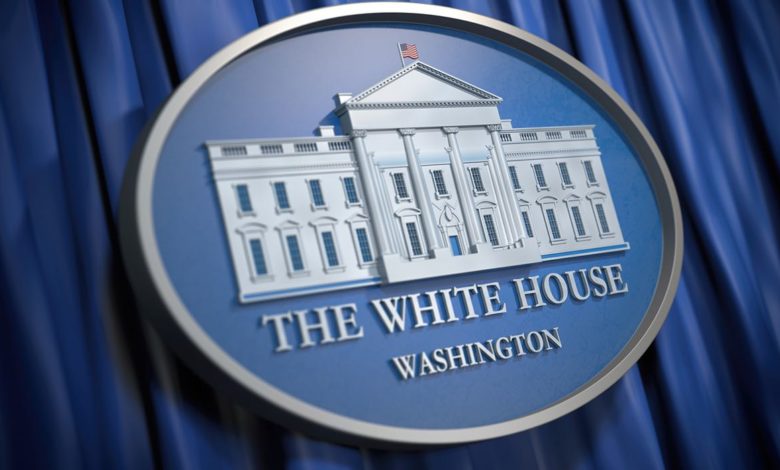
The White House released its FY 2021 budget proposal to Congress on 10 Feb., including a proposed $142.2 billion investment in Federal research and development. The President’s budget places a high priority on funding artificial intelligence and quantum information science as the foundations for U.S. leadership in “Industries of the Future,” along with increased investment in NASA space exploration programs designed to lead to an eventual manned mission to Mars.
The $142.2 billion request represents an 8.8% decrease ($13.8 billion) from the estimated $156 billion in federal R&D approved by Congress in FY 2020. That decrease would hit non-defense R&D spending (down -11% in the request) harder than defense R&D spending (down 6.3% in the request). Assessed by function, the budget request proposes a 6.5% decrease to basic research, an 11.7% decrease to applied research, and a nearly 40% decrease in funding for R&D facilities.
Artificial Intelligence (AI): The President’s FY 2021 budget includes a significant increase designed to double U.S. investment in AI R&D to approximately $2 billion by 2022. Highlights of the AI request by agency include:
- $830 million for AI R&D and interdisciplinary research institutes at the National Science Foundation, a more than 70 percent increase over the FY 2020 budget.
- $125 million in AI research by the Department of Energy’s Office of Science, a $54 million increase over FY 2020.
- $100 million for the Department of Agriculture to support applications of advanced technology, including AI, in agricultural systems.
- $50 million to the National Institutes of Health for new research on chronic diseases using AI and related approaches.
- $459 million for DARPA AI R&D, an increase of $50 million from FY 2020,
- $290 million for the Department of Defense’s Joint AI Center, an increase from $242 million in FY 2020.
Quantum Information Science (QIS): President Trump’s FY 2021 budget greatly bolsters Federal QIS R&D funding by nearly 50%, putting QIS R&D on the path to double to over $860 million by 2022. Agency highlights include:
- National Science Foundation investment in QIS research would double to $230 million, an additional $120 million over FY 2020.
- The Department of Energy Office of Science spending on QIS research at the national laboratories and in industry would increase to $237 million, a nearly $70 million increase over FY 2020. Office of Science funding would include $25 million to support early state research for a quantum internet.
Space Exploration: The Trump budget request would increase NASA’s budget by almost 12 percent, with nearly all new funding going to NASA’s exploration technology and systems budgets supporting the Artemis lunar exploration program. To help fund the exploration priority, NASA’s science directorate would be asked to absorb an 11% cut ($762 million) including funding for the Wild Field Infrared Survey Telescope (WFIRST). NASA’s $120 million STEM education budget would also be zeroed out.
To offset these priorities, the budget proposes a number of sharp cuts to agency R&D programs including:
- National Institutes of Health: a cut of 7%, or $2.942 billion, to $36.965 billion
- National Science Foundation (NSF): a cut of 6%, or $424 million, to $6.328 billion
- Department of Energy’s (DOE’s) Office of Science: a cut of 17%, or $1.164 billion, to $5.760 billion
- NASA science: a cut of 11%, or $758 million, to $6.261 billion
- DOE’s Advanced Research Projects Agency-Energy: a cut of 173%, which would not only eliminate the $425 million agency, but also force it to return $311 million in previously appropriated funds to the U.S. Department of the Treasury
- S. Department of Agriculture’s (USDA’s) Agricultural Research Service: a cut of 12%, or $190 million, to $1.435 billion
- National Institute of Standards and Technology: a cut of 19%, or $154 million, to $653 million
- National Oceanic and Atmospheric Administration: a cut of 31%, or $300 million, to $678 million
- Environmental Protection Agency science and technology: a cut of 37%, or $174 million, to $318 million
- Department of Homeland Security science and technology: a cut of 15%, or $65 million, to $357 million
- S. Geological Survey: a cut of 30%, or $200 million, to $460 million
Next Steps
The budget resolution passed by Congress in 2020 extends through 2021 and sets guidelines for FY 2021 budget appropriations that are more generous than the President’s request. Expect Congress appropriators to move quickly on their FY 2021 appropriations bills this Spring. However, being an election year with party conventions starting in July, it is unlikely that their work will be substantially completed before Congress goes into its pre-election recess. A continuing resolution or series of resolutions to fund government operations at current levels is likely by the end of the fiscal year in late September, with the potential for an omnibus appropriations bill to move in a post-election legislative session.






